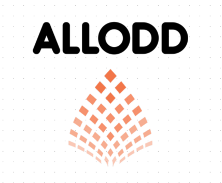Prof. Xavier Barril
|
Host Organization University of Barcelona, Spain Faculty of Pharmacy Barril Lab ALLODD Role Main Supervisor for ESR3 |
Brief Bio: Xavier Barril is an ICREA Research Professor at Facultat de Farmacia of the Universitat de Barcelona. He received his Ph.D. from this University in 2001 for theoretical studies on the ligand-receptor molecular recognition process under the supervision of Profs. F. Javier Luque and Modesto Orozco. He then joined the Applications Modelling team at Vernalis (Cambridge, UK) for 4 years, where he was involved in a range of projects, mainly in the oncology area. Then, in 2005 he was appointed ICREA Research Professor to start his own group. He has co-authored more than 90 scientific publications, including research papers, reviews and book chapters, as well as 13 patents. Dr. Barril is also co-founder of Minoryx Therapeutics (2011) and Oniria Therapeutics (2021), as well as part-time CSO of Gain Therapeutics. His research focuses on the discovery of bioactive molecules exploiting unusual mechanisms of action through a combined use of computational and experimental techniques. His group also develops new computational tools to tackle such tough targets and strives to improve the molecular understanding of pharmacologically important biological events. Combining physical chemistry, the use of computers and an intimate knowledge of the molecular processes that govern life, it is becoming possible to rationalize and expedite the discovery of new drugs. In our group we are developing new computational tools to be used in rational drug discovery and, at the same time, we collaborate with experimental labs to help discover and optimize molecules that may become drugs in the future. Research focus:
Piticchio SG, Martínez-Cartró M, Scaffidi S, Rachman M, Rodriguez-Arevalo S, Sanchez-Arfelis A, Escolano C, Picaud S, Krojer T, Filippakopoulos P, von Delft F, Galdeano C, Barril X Discovery of novel BRD4 ligand scaffolds by automated navigation of the fragment chemical space Journal of Medicinal Chemistry, 2021; 64(24): 17887-17900 Sánchez-Cruz N, Medina-Franco JL, Mestres J, Barril X Extended connectivity interaction features: improving binding affinity prediction through chemical description Bioinformatics. 2021; 37 (10):1376-1382 Majewski M, Barril X Structural stability predicts the binding mode of protein-ligand complexes Journal of Chemical Information and Modelling. 2020; 60(3): 1644-1651 Majewski M, Ruiz-Carmona SR, Barril X An investigation of structural stability in protein-ligand complexes reveals the balance between order and disorder Communications Chemistry, 2019, 2(1): 1-8 Ruiz-Carmona, Sergio; Schmidtke, Peter; Luque, Javier; Baker, Lisa; Matassova, Natalia; Davis, Ben; Roughley, Stephen; Murray, James; Hubbard, Rod; Barril, Xavier Dynamic undocking and the quasi-bound state as tools for drug discovery Nature Chemistry, 9 (3), pp. 201–206 , 2017, ISSN: 1755-4349, (Link to tutorial: www.ub.edu/bl/undocking). Ruiz-Carmona, Sergio; Alvarez-Garcia, Daniel; Foloppe, Nicolas; a. Garmendia-Doval, Beatriz; Juhos, Szilveszter; Schmidtke, Peter; Barril, Xavier; Hubbard, Roderick; Morley, David rDock: A Fast, Versatile and Open Source Program for Docking Ligands to Proteins and Nucleic Acids PLoS Computational Biology, 10 (4), pp. e1003571, 2014, ISSN: 1553-7358. Álvarez-García, Daniel; Barril, Xavier Molecular Simulations with Solvent Competition Quantify Water Displaceability and Provide Accurate Interaction Maps of Protein Binding Sites Journal of Medicinal Chemistry, (57), 2014. Schmidtke, Peter; Luque, Javier; Murray, James; Barril, Xavier Shielded hydrogen bonds as structural determinants of binding kinetics: application in drug design. Journal of the American Chemical Society, 133 (46), pp. 18903–10, 2011, ISSN: 1520-5126. Schmidtke, Peter; Barril, Xavier Understanding and predicting druggability. A high-throughput method for detection of drug binding sites. Journal of medicinal chemistry, 53 (15), pp. 5858–67, 2010, ISSN: 1520-4804. Seco, Jesus; Luque, Javier; Barril, Xavier Binding site detection and druggability index from first principles. Journal of medicinal chemistry, 52 (8), pp. 2363–71, 2009, ISSN: 1520-4804. |
|
This project has received funding from the European Union's Horizon 2020 research and innovation programme under the Marie Skłodowska-Curie grant agreement No 956314.
|





